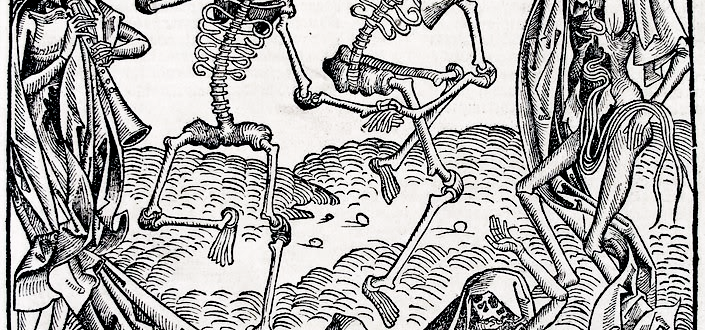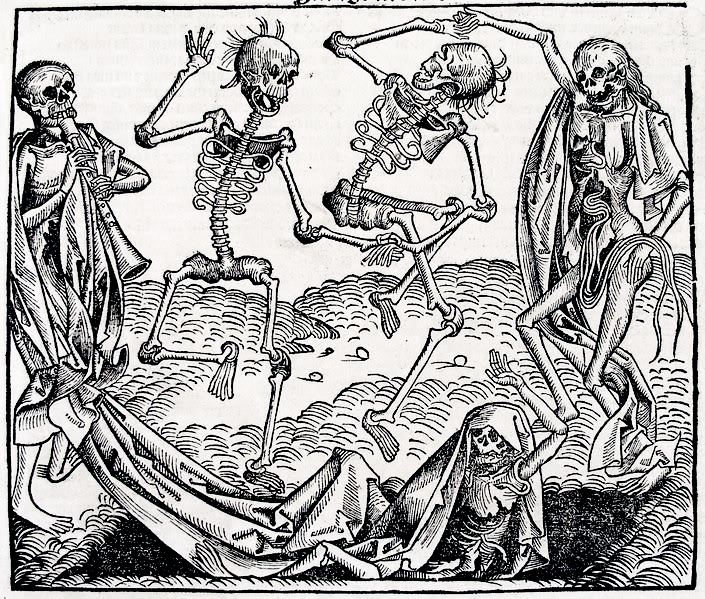7-13 September 1415 – Disease and Deaths during the Siege of Harfleur
By Dan Spencer
As the siege of Harfleur dragged on this week, losses began to mount among the English besiegers with deaths and illnesses caused by the outbreak of disease due to the unsanitary conditions. The presence of thousands of men, horses and other animals in close proximity together, along with the waste they produced, meant that the conditions were ripe for infection. This was a perennial problem faced by all armies undertaking sieges in the Middle Ages, with diseases, such as dysentery, often inflicting a greater death toll than those caused by enemy action. During the long siege of Calais (1346-7) undertaken by Henry’s great grandfather, Edward III, reinforcements had to be frequently sent to strengthen the besieging English army, due to losses caused by disease and desertions.
This example illustrates that losses were likely to be greater amongst large armies involved in siege warfare as there were more possible victims to spread infections. Henry’s decision to besiege Harfleur with his entire army of over 11,000 men therefore resulted in sizeable casualties, which gradually reduced the number of soldiers available to him. This was exacerbated by the actions of the defenders, who used the water defences of the town against the attackers, by flooding the fields to the west of the settlement by opening the sluices. The consequences of this was that waterborne diseases were able to spread amongst the besiegers, which led to the deaths of a number of high profile individuals: including Richard Courtenay, bishop of Norwich, who fell ill on 10 September and died five days later. Michael de la Pole, earl of Suffolk died on 18 September. Exactly how many men died from military action or disease is uncertain, but after the town fell and as he contemplated his march to Calais, Henry decided to send home at least 1,500 men who were sick.
On the eastern side of the town where the duke of Clarence was in command mines were to dug intended to run under the walls to weaken them. English writers consider the mining operation to be a complete failure. With so little space the diggers had to operate within full sight of the defenders, who retaliated with countermines and a sortie against Clarence’s men which again led to losses. The plan was thus abandoned. The Vita et Gesta Henrici Quinti written in the late 1430s comments that the English had lost the knack of mining because of the long period of military inaction and truces in the recent past and that some of the nobility not keen on fighting underground. But the men who had been guarding the miners gained an advantage in seizing control of one of the outer ditches of the town, from which they discharged missiles from catapults and stone throwers (not, it seems, gunpowder artillery). This was a useful breakthrough even if it was balanced by the sortie of the enemy from the main barbican on 15 September which set fire to English defences.
This information came from Anne Curry, Agincourt: A New History (Stroud: Tempus, 2005), pp. 94, 122-3; Maurice Keen, Armies and Warfare in the Middle Ages: the English Experience (London: Yale University Press, 1996), p. 303; Christopher Allmand, Henry V (New Haven: Yale University Press, 1997), p. 80; TNA E 101/47/37, E 101/47/38; E358/6 rot 6d; C 76/98 m. 19; Sumption, Jonathan, The Hundred Years War. Volume I, Trial by Battle (London: Faber, 1990), p. 558.
Image is of the Danse macabre by Michael Wolgemut, taken from Wikipedia and is in the Public Domain

